Cats are amazing creatures who are fiercely independent and extremely smart. Their intelligence is often underestimated because they do not answer commands, come when called (unless they want to), or undertake the myriad of roles of which dogs are capable. However, many experts believe that it is precisely these traits that show them to be smarter than dogs.
Cats indeed have smaller brains than dogs. A cat’s brain occupies just 0.9 percent of their body mass compared to dog brains, which occupies 1.2 percent of their body mass on average. However, this is one of many cases where size really does not matter. After all, Neanderthals had bigger brains than Homo sapiens, and we all know which one went extinct. Modern thinking believes that brain structure and surface folding are more important in determining smartness than brain size.
The surface folding of a cat’s brain shows greater similarity to the human brain than a dog’s brain does; in fact, there is roughly a 90 percent similarity. Cat’s also have more complex and greater cerebral cortexes than dogs as well. This is important because it is the part of the brain that deals with cognitive information processing. The cerebral cortex in a cat contains almost twice as many neurons as a dog’s, and they have a higher number of nerve cells in the visual areas of the brain.
The complexity of the cerebral cortex itself does not guarantee intelligence of smartness but given that it is the area that deals with rational decision making, complex problem solving, and sensory and emotional processing, it is a good indicator. The cerebral cortex is also the area responsible for long and short-term memory storage, meaning that cats have longer memories than dogs.
So, this raises the question as to why cats do not fulfill the same roles within our society as dogs? Well, they may be smart enough to find ways not to work like dogs, quite literally. That just leaves one further question, which is the smartest cat breed? In this article, we explore the top 10 smartest cat breeds and explore the specific characteristics each breed exhibits that earns it a place on the top 10 list.
Abyssinian Cat
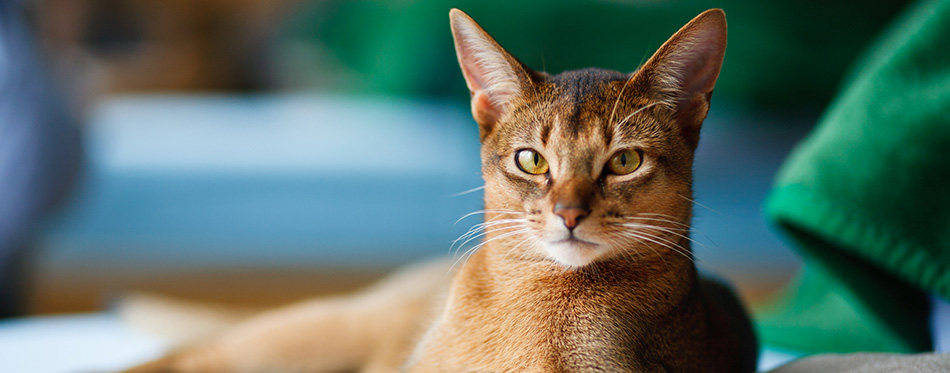
The Abyssinian cat originates from Abyssinia, modern-day Ethiopia). It resembles the African wildcat and is thought to have first been transported to the UK by army personnel in the 1860’s. The early cats were breed with British shorthairs, later some of the cats brought across were also bred with oriental breeds. Those bred with oriental cats created long-haired kittens, these were later designated as a separate breed.
Abyssinian cats are recognized by their medium size, lithe, strong bodies, and long, slender legs. The cats have round, wedge-shaped heads, and the tips of the ears carry distinctive small tuffs. The eyes are large and almond-shaped. Abyssinian cats come in several colors, the most well know of these is ruddy.
The breed is curious, active, and playful. They are excellent climbers, and their sense of adventure is tempered with what we might deem to be commonsense. This means that while they enjoy challenges and adventure, they are not too reckless. Abyssinian cats love company and usually become very attached to their human families.
If you are considering a cat from this breed, then be aware that they have an increased risk of suffering from pyruvate kinase disease. This is an inherited condition that often causes anemia. There is a reliable test for the condition, and you should ask your breeder about this before buying or adopting a cat.
Balinese Cat
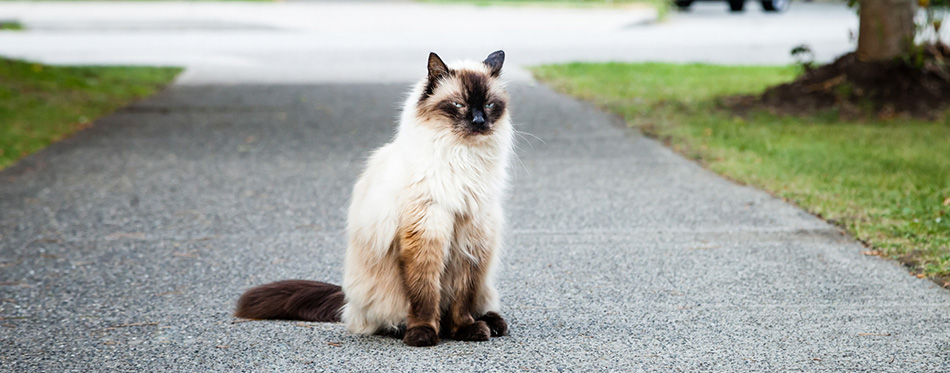
The Balinese cat breed was developed in the 1940s in the United States. It is the result of selectively breeding long-haired kittens from pedigree Siamese cats. To be considered part of the breed, a cat must have only Siamese and Balinese cats in its bloodline.
Balinese cats are fine-boned, elegant cats that have very graceful movements. They have silky, medium to long coats that are very fine. Their coats are less likely to tangle and matt than many other breeds due to them having no undercoat. The Balinese breed can also be recognized by its striking blue eyes and long, well-proportioned head. They have good width between their eyes and the face narrows evenly to a fine muzzle. The blue eyes are oriental in shape, are well proportioned, and slant slightly towards the cat’s nose. The cats also have slim legs, oval-shaped feet, and small plumed tails.
The breed is keen, alert, and inquisitive. They like to be involved in everything that is going on around them and are known to be quite vocal cats. Balinese cats love attention and love to play. This makes them ideal pets for families with children. They are also sensitive to their owner’s mood and tend to stick close to anyone feeling ill or low. They enjoy interactive games and will even play fetch. Balinese cats also love to climb and need high places where they can sit and watch the world. If they are not provided with safe things to climb, they are likely to make use of anything they find, including the curtains.
If you are considering a Balinese cat, then you should be aware that they can live up to 22 years of age. However, they do suffer from the same inherited conditions as Siamese cats, including progressive retinal atrophy. Stud cats should be tested for the condition. Regular daily exercise is a must, as is regular grooming.
Turkish Van Cat
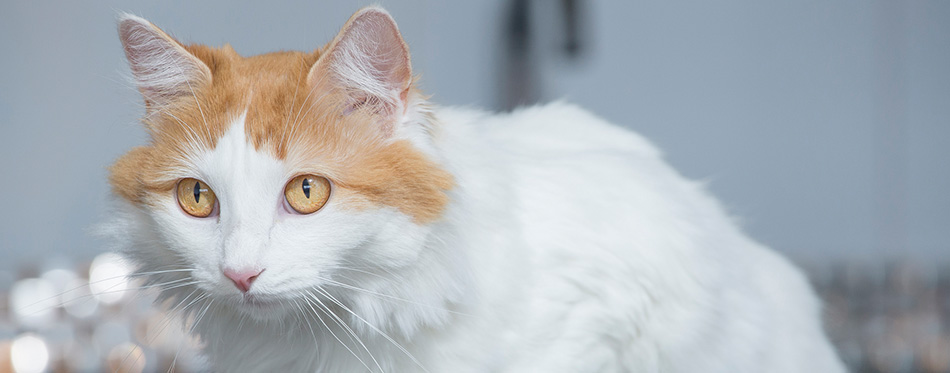
The Turkish Van cat was developed in the United Kingdom from the selective breeding of cats from various cities across Turkey. The Turkish Van is considered a rare breed and is easily recognized by the Van pattern on the head and tail, with the main body of the cat remaining white. Its eyes can be either blue or amber, with some members of the breed having one eye of each color. The breed was officially recognized in the UK by the Governing Council of the Cat Fancy (GCCF) in 1969.
Turkish Van cats are semi-longhaired with no evident undercoat. This gives their surprising water repellent coat a cashmere or rabbit fur feel. These cats are among the larger cat breeds and feature board shoulders, giving the impression of a top-heavy body. The back legs are slightly longer than the front, but the cat remains in proper proportion. They have large paws and strong muscle structure.
While the early breed tended toward being aggressive, modern Turkish Van cats are friendly and generally sociable cats. They remain excellent hunters and create strong bonds with their owners and other animals within the home. The Turkish Van is lively and playful and may initiate play by presenting their owners with toys. Unlike many other cats, the Turkish Van has an affinity with water and actually enjoy swimming.
One of the benefits of owning a Turkish Van cat is that it does not present any specific or genetic health conditions. However, they do require daily grooming to keep their coats in excellent order.
Bengal
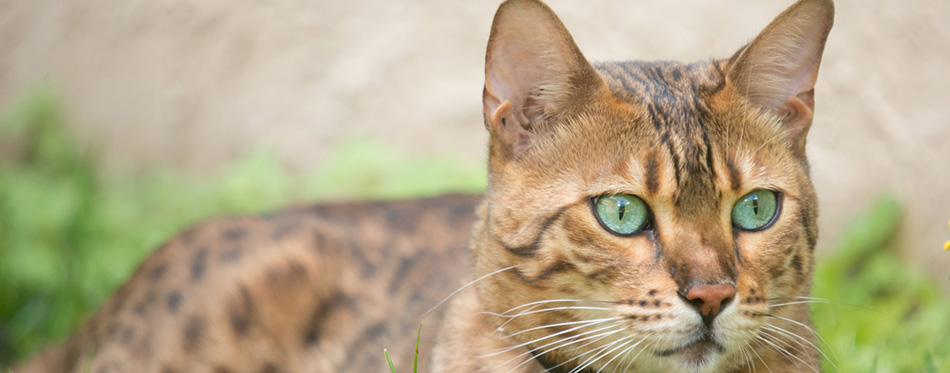
The Bengal breed is relatively new and was begun by crossing a domestic cat in the United States with an Asian Leopard cat. The breeding goal was to develop a domestic cat that retained a strong physical resemblance to its wild ancestors, but that was a trustworthy and pleasant family companion.
The Bengal cat is sleek, large, and very muscular. The breed has thick tails that are carried low and coats that maintain the distinctive spotted or marbled appearance of their ancestors. Bengal’s have broad heads, small ears, and pronounced whisker pads. Their eyes are almond-shaped and black-rimmed.
Bengal cats are extremely energetic and love to play. They see everything around them as something that can be played with and are easily bored. They need regular companionship to prevent boredom from turning to destruction and require opportunities to climb and ‘hunt.’ Bengals are very vocal cats, particularly in unfamiliar situations or surroundings. They can be territorial and intolerant of other cats, particularly if there is a high density of cats in their neighborhood.
Bengal cats are free from any known inherited conditions; however, they do have a higher risk of hypertrophic cardiomyopathy, a heart condition. They may also be more susceptible to feline infectious peritonitis than other breeds.
You may also like our article on Cat Food for Bengals.
Scottish Fold Cat
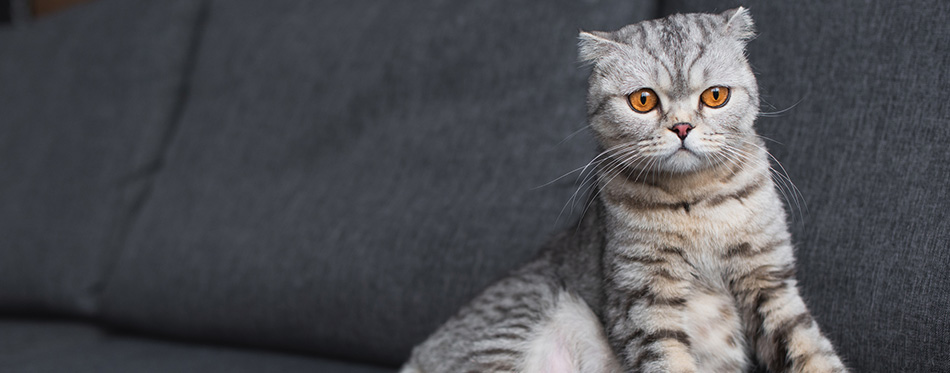
The Scottish Fold cat is considered to be one of the sweetest natured cats on the planet. The breed is relatively new, only being discovered in the early 1960s when a farmer found a barn cat with curled back ears. The cat, Susie, is the fountain of the entire breed, which is recognized primarily by its uniquely curled back ears.
The Scottish Fold is a medium-sized cat whose unique ears are the result of a spontaneous mutation. The cats also have large, round eyes and can boast either long or short coats. They have rounded heads, prominent cheeks, and a jowly appearance. As well as being folded, the ears must be rounded at the tips to be considered part of the breed. Scottish Fold cats have short necks, medium length, rounded bodies, and well-proportioned legs. The feet are rounded, and tail size is in proportion to the rest of the body.
The Scottish Fold cat thrives on routine and does not like change, whether this is changes to their feeding times or the position of furniture within the home. The breed forms a strong bond with its owner and will follow them from room to room. They are confident and outgoing cats who remain very kitten-like throughout their lives. The Scottish Fold cat can use its paws for a variety of tasks. This includes eating its food, swiping at water dripping from taps, and getting into cupboards to help themselves to snacks. They learn new things quickly and enjoy food related puzzles and games.
The Scottish fold can live up to 15 years when cared for correctly. They do suffer from a range of hereditary issues, including osteochondrodystophy and autosomal dominant polycystic kidney disease, for which stud cats can be tested.
Burmese Cat
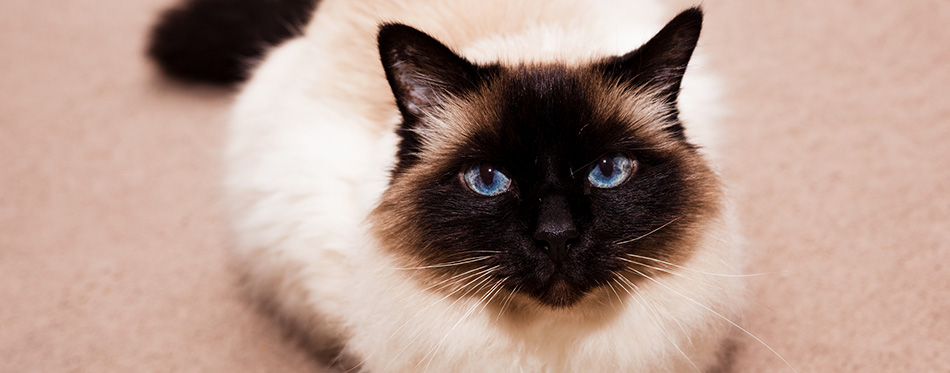
The Burmese cat was first recognized as a distinctive breed in the United States after a dark brown cat that closely resembled a Siamese was taken to California and mated with a Seal Point Siamese cat. The breed is medium-sized and exhibits well-muscled bodies and rounded heads. They are less dainty than their Siamese ancestors and have large eyes that can be any shade of yellow. Burmese cats have short glossy coats and straight tails that have rounded paintbrush tips. There are ten recognized colors for Burmese coats; all are lighter in the underparts, gradually getting darker as the coat goes up towards the back.
Burmese cats are affectionate and friendly. They require attention from their human families to thrive. Burmese cats can be very demanding and are known to follow their owners around, begging for attention and cuddles. They love to play and enjoy interactive fetch type games. They are also excellent problem solves and can work out how to open doors. This makes them skilled escape artists.
Burmese cats are generally quite robust; however, they can be susceptible to diabetes mellitus. Some breeding lines also show a tendency towards feline orofacial pain syndrome and hypokalaemic polymyopathy.
Siamese Cat
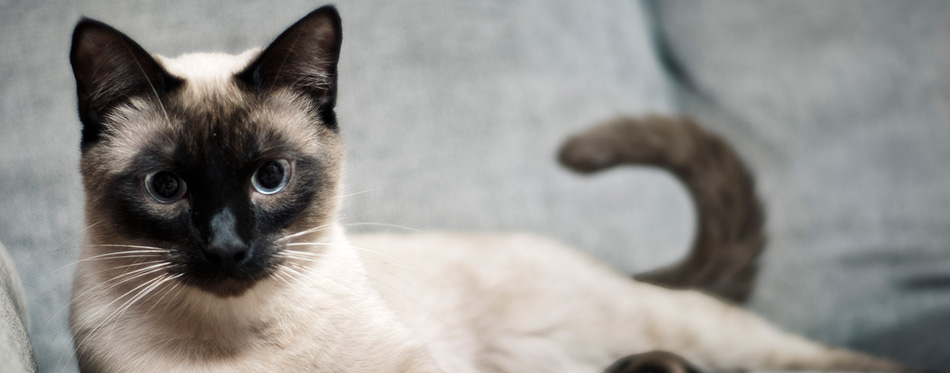
The Siamese cat is one of the oldest breeds of cat on the planet. Originally from Siam, modern-day Thailand, they are considered sacred cats and were once used to guard Buddhist temples. The breed first arrived in the United Kingdom in the 1880s and soon became popular with breeders and families alike.
The breed is easily recognized by its startling blue eyes and pointed ears. They have lithe, athletic bodies, and delicate, elegant legs. The wedge-shaped head is well-balanced, and the ears are large and pointed. Their eyes are always alert, very oriental, and slanted towards the nose, with good width between them. The Siamese breed has an extremely glossy, close-lying coat with points being clearly defined on the mask, ears, feet, and tail.
Siamese cats thrive on routine and do not like change. They are incredibly vocal and are well-known for holding conversations with their owners if they are unhappy about something. Siamese cats are demanding and do not like to be left alone. They enjoy the company of other Siamese cats as well as their humans. They have a lot of energy and learn new things very quickly. They will play with plays and play fetch; they are also able to work out puzzles such as how to open cupboard doors. Siamese cats love to explore, and this can get them into trouble.
If you are considering adding a Siamese cat to your household, you should be aware that they can suffer from a range of hereditary conditions, including progressive retinal atrophy, systemic amyloidosis, intestinal tumors, and gangliosidosis. Some of these conditions can be tested for in stud cats.
Cornish Rex
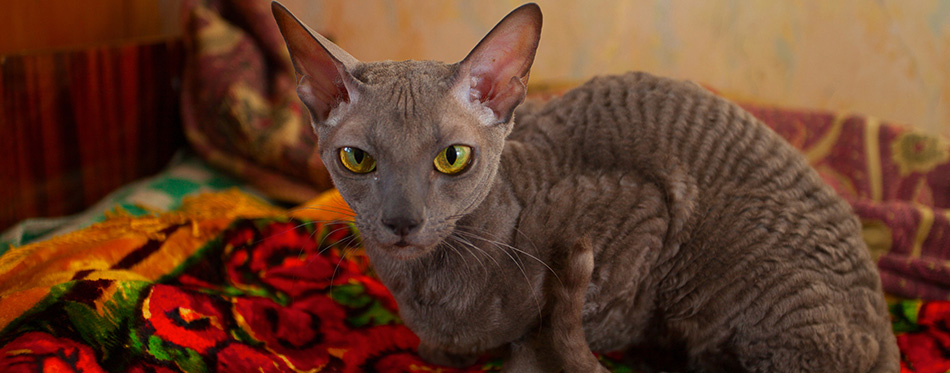
The Cornish Rex was first bred in Cornwall, UK, in the 1950s. The breed is the result of a spontaneous natural mutation that resulted in a kitten with crinkly whiskers and a curly coat. A recessive gene is responsible for the mutation, meaning that it only occurs when two closely related cats mate. The GCCF recognized the breed in the late 1960s.
The Cornish Rex is a small to medium sized cat of unique physical appearance. They have long back legs, athletic bodies, and wedge-shaped heads with high cheekbones, round muzzles, and large wide ears. Their eyes are oval-shaped and medium-sized with a slight slant. Their coat is wavy, silky, and dense. The waves are most prominent on their head, neck, and shoulders; they tend to have long whiskers and eyebrows, which also have a crinkly or curly appearance.
The Cornish Rex forms a strong bond with its human family and loves being around people. They learn new things very quickly and enjoy playing, including fetch. They exhibit several dog-like behaviors and get bored very quickly when left on their own. When bored, they become stressed and can exhibit destructive behaviors.
The Cornish Rex tends to live for between 12 and 16 years; however, they can suffer from a range of hereditary conditions, including fading kitten syndrome, Burmese hypokalemia, and autosomal dominant polycystic kidney disease, all of which can be tested for in stud cats. They are also highly susceptible to sunburn during the warmer summer months.
Havana Brown
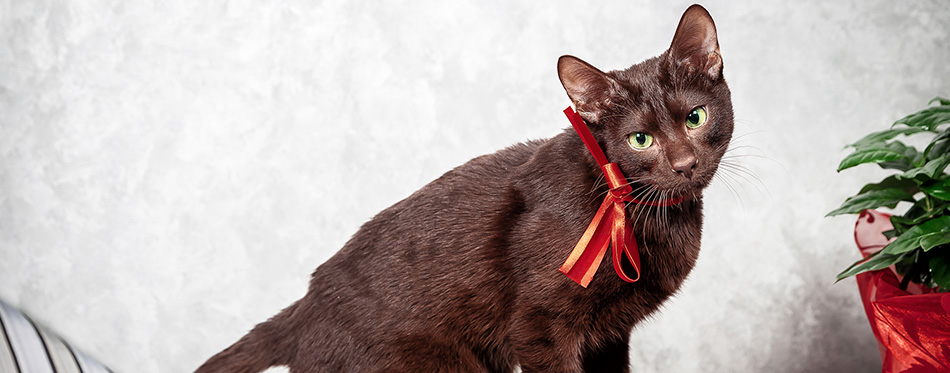
Havana Brown cats are related to the Siamese breed and are the result of breeders wanting to create a breed that resembled the Siamese but with different coating coloring. Despite some early issues with the breeding gene pool, the breed final gained GCCF recognition in 2014.
Havana Brown cats are medium sized, elegant, graceful cats that are nicely proportioned and display physical similarities to Siamese cats. The main difference between the two breeds is the coloring; Havana Brown cats have vivid emerald green eyes and solid rich-chocolate color coats.
Like Siamese cats, the Havana Brown breed thrives on routine and does not like change. They exhibit many dog-like behaviors and form strong bonds with their human families. They will follow their humans from room to room to see what they are doing. The breed thrives on company and is exceptionally talkative. They can be easily harness trained and love to explore outdoors. Havana Brown cats enjoy interactive games, play fetch, and will play for hours without getting bored.
Havana Brown cats can live for around 15 years and are considered a very healthy breed with few health conditions. However, due to their oriental origins, breeders should test cats for conditions that are associated with such cats.
Singapura Cat
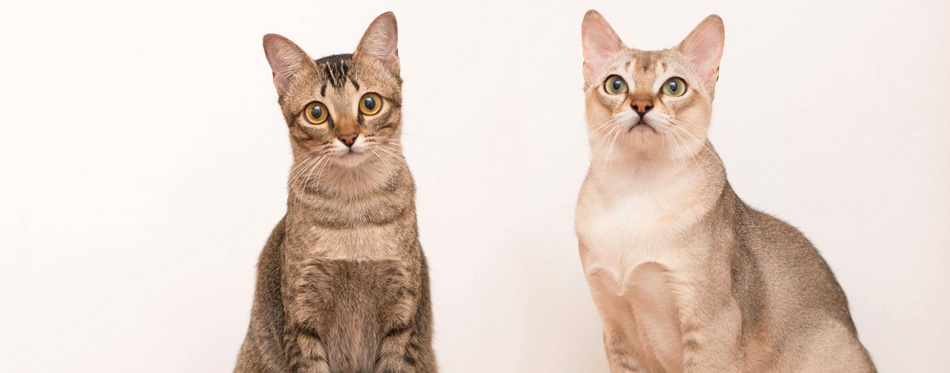
The Singapura cat has similar physical characteristics to the Abyssinian; however, it is smaller in size. The Singapura is the world’s smallest cat breed and originates from Singapore. Every cat of this breed is a direct descendant of just four cats that survived a cull in 1974.
The Singapura cat is quieter than its oriental counterparts and is more reserved. However, it is friendly and affectionate. They love sitting with their humans and are often found nestled on their human’s knees or shoulders. They also like to be up high where they can survey the world around them and will make use of wardrobes or bookcases if they do not have purpose-built high places to lay. Singapura cats love to play and are active and lively cats who learn quickly and are very inquisitive.
The Singapura can live for up to 15 years and has few hereditary health conditions. They are robust cats, and those conditions that do affect them can be tested for by breeders.
Owning one of our smartest cat breeds takes time, patience, and effort. You need to keep them engaged to stop them from becoming bored and destructive. This, in addition to doing everything you would usually do to support, stimulate, and care for a cat. Do you have what it takes to give one of the smartest cats a good home?

